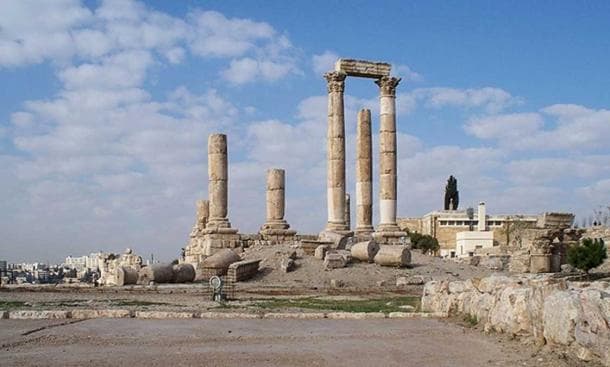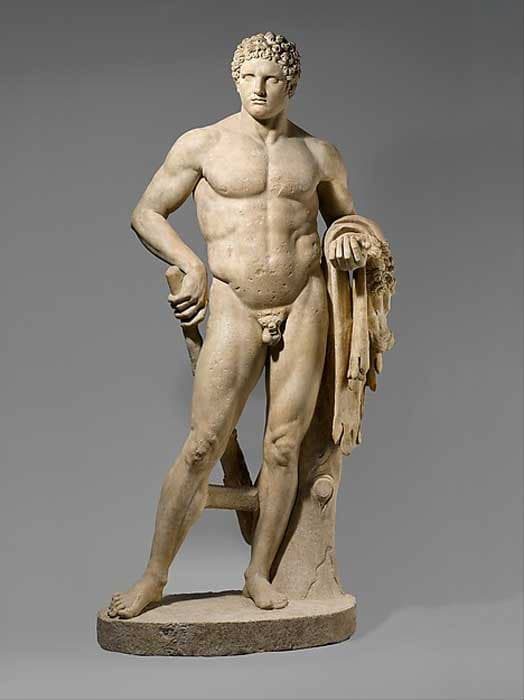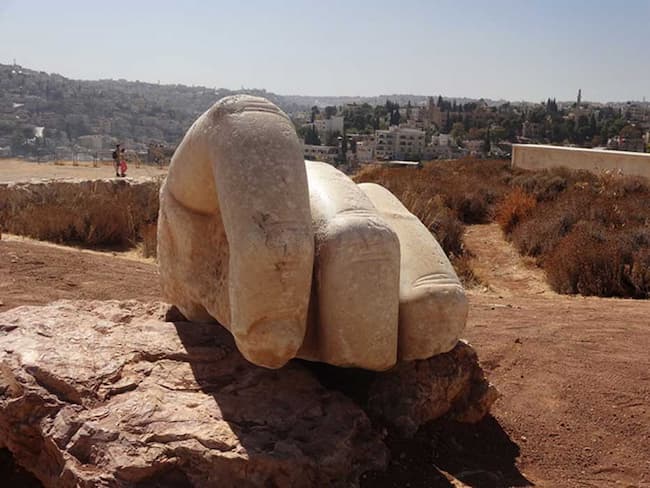The Hand of Hercules is the name given to a massive fragment of an ancient statue that was unearthed by archaeologists in Amman, the capital of Jordan. This fragment is believed to have once been a part of a colossal marble statue of the demi-god Hercules, as it was found at the site of the Roman Temple of Hercules. Apart from this hand (or more accurately, three fingers of a hand), the only other piece of the statue that has remained is its elbow. The statue’s hand and its elbow can be seen by those visiting the remains of Amman’s Temple of Hercules today.

During the 1 st century B.C., the area of modern day Jordan came under Roman rule. At that time, Amman was one of the Ten Cities of the Decapolis, and was known by its Greek name as Philadelphia. During the period of Roman rule, which lasted for about four centuries, many public monuments were built in Amman. Some of these, like the Roman Theatre and Roman Odeon can still be seen in the city today.
Another building, the Temple of Hercules, was also built during this time, though it has not been as well preserved as the other two aforementioned structures. Like the Roman Theatre and the Roman Odeon, the Temple of Hercules was constructed during the reign of Marcus Aurelius. It has been suggested that the temple was never completed, as only a part of the structure was adorned with columns, whilst the rest was left bare.
Still, the parts of the temple that have survived through the ages have provided scholars with some information about the monument. For instance, the part of the temple where the columns had been erected is the portico. These columns, six in total, would have originally stood at a height of about 10 m. The columns had fallen over the centuries, and were re-erected in 1993. In addition, the area covered by the temple has been measured. With these pieces of information, a model of the temple has been made, and is today displayed in the American Center for Oriental Research (ACOR) in Amman.
It has been suggested that the Temple of Hercules was built on the site of an older temple dedicated to a native god. Within the area where the temple’s inner sanctum would have been, there is a bare patch of rock that has been left exposed. It has been postulated that this may have been the sacred rock that was the centrepiece of the 9 th century B.C. Ammonite Temple of Milcom (known also as Moloch or Molech).

Where is the Rest of Hercules?
Apart from the hand and the elbow of the statue, little more was found at the site – just a scattering of coins – which leaves open the question, where is the rest of Hercules? And can we be certain that it even was a statue of Hercules? Even the experts themselves are not entirely certain if the temple in Amman was indeed dedicated to Hercules. Nevertheless, given that a large number of coins bearing the image of Hercules have been found in the city below, it has been speculated that the temple was probably dedicated to him, and the hand most likely was part of a statue of the demi-god.
One of the Largest Known Marble Sculptures

Based on the remaining three fingers and elbow, it has been estimated that the complete statue of Hercules would have stood at a height of 43 feet (13 meters), which would make it one of the largest marble statues to have been sculpted in history. It has been suggested that the statue of Hercules eventually collapsed as a result of a catastrophic earthquake, which would strike the area from time to time. The statue would have probably been fragmented, and the pieces reused by locals for other purposes. Thus, all that remains today of this colossal statue are its three fingers and one of its elbows.

